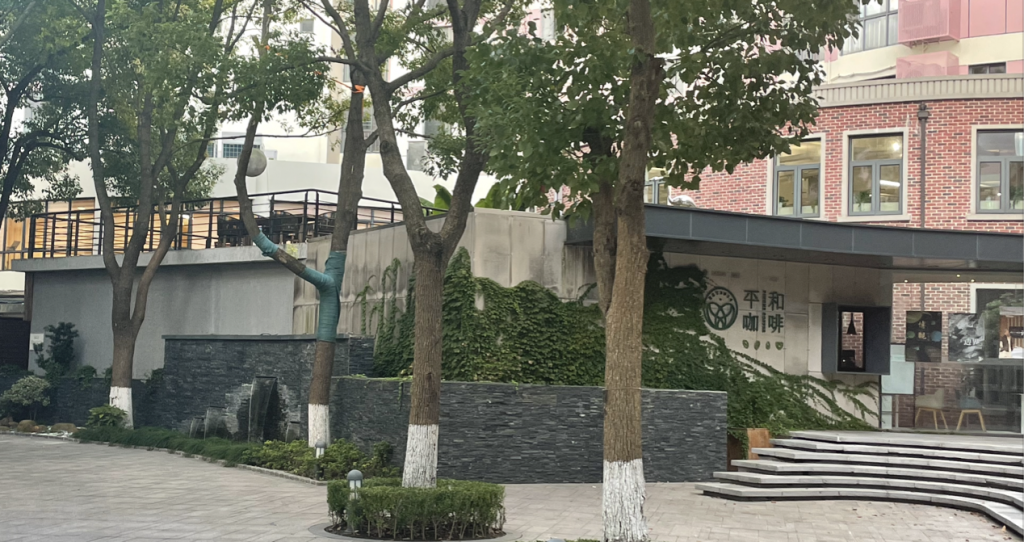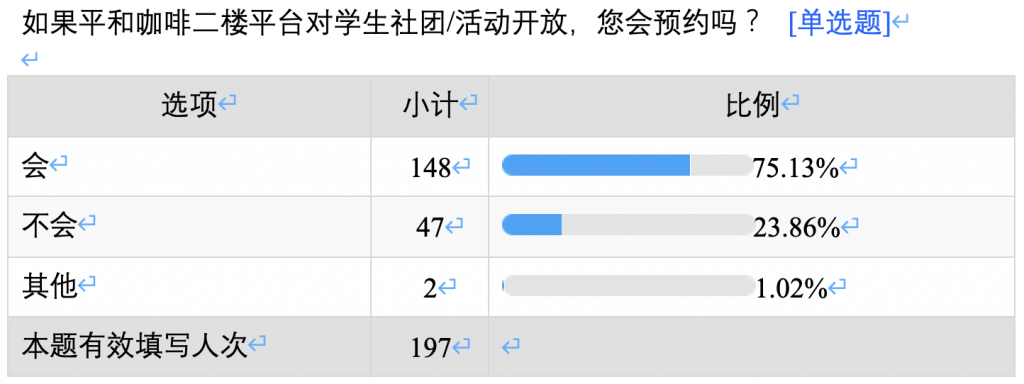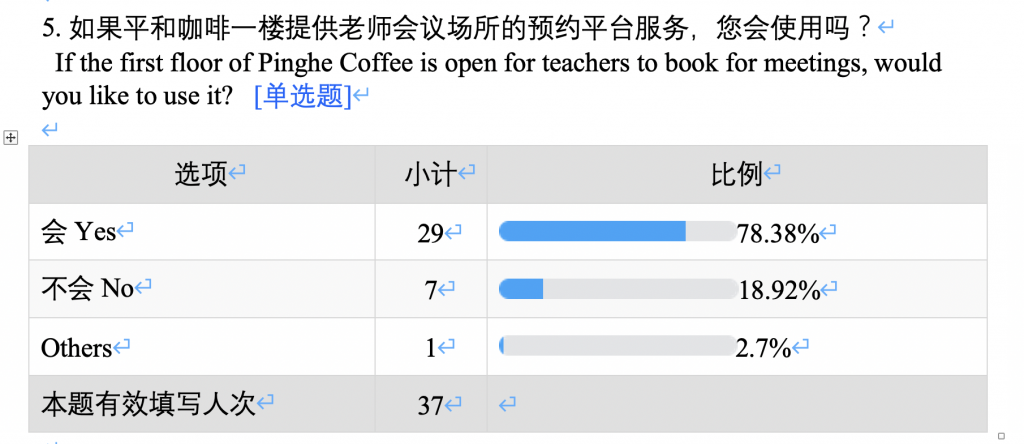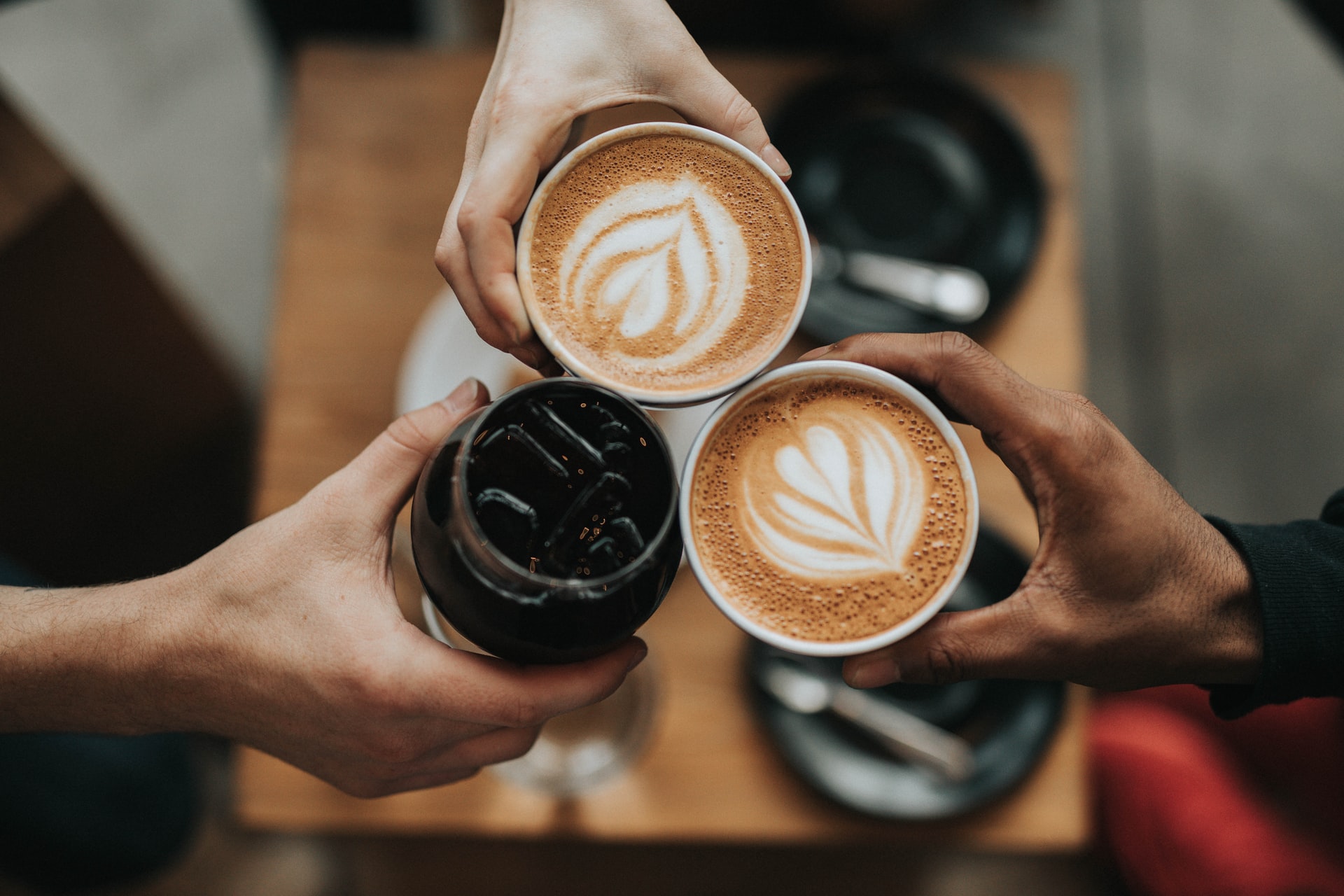
Author: Sijia Zhang
Mentor: Dr. Albert Cusi
Shanghai Pinghe School
1. Introduction and Inspiration
This project is about improving the coffee shop (called Pinghe Coffee) in my high school. I came up with this idea in tenth grade. There are several inspirations that leads to this project. The first inspiration is I am planning to major in business so I would like to enroll an actual business and gain experience through it. The second is I like visiting different cafés because the atmosphere and the vibes it gives to me. I love the orange dim light and jazzy music in the café. Third, there is a coffee shop on campus, so I decide to start off a project which can improve the environment of the coffee shop and the quality of campus life for teachers and students. But, I am a 11th grade student so I also need to pay close attention to my GPA and academic requirements. I need to balance my time between the school work and the activity.
2a. Marketing Mix
2.a.i Product
The Pinghe Coffee serves 13 different drinks in total.

There are Americano, mocha, latte, vanilla or hazelnut latte, caramel macchiato, flat white, cappuccino, espresso, mandelin-indonesia, yirgacheffe, the quarter of selected, Osmanthus latte, and lemonade. The coffee shop serves both hot and iced drinks for all of the coffee drinks. The lemonade only have the choice of cold drink. The coffee beans are the same as the ones %Arabic and See Saw used. Other ingredients like milk or syrups are also delivered directly from factories.
2.a.ii Price
The price of the drinks in the coffee shop range from 16 RMB to 22 RMB. The average price for all of the drinks is more likely to be 17 RMB, because there are only a few drinks are a few RMB expensive than other drinks.
2.a.iii Place & Location
The coffee shop is located in the middle of the campus. The school has five main buildings. The high school students mainly work in building four. It usually take a 3-5 minutes’ walk from building four to the coffee shop.
The coffee shop has two floors.

For the first floor, the entrance is located at the left corner of the coffee shop (Number 1 labeled in pic 2). The take away window is where high school students order coffee (Number 3 labeled in pic 2). The second floor is labeled as number 2 in pic 2.

Then on the right side of the coffee shop, a curve, glass-made alley is connected to the coffee shop.

The first floor also contain both indoors and outdoors. When you enter the main entrance of the coffee shop, there is an open space. There are some chairs and table stacked at the corner. Then you can enter the actual door of the coffee shop.
The coffee are all made on the counter on the right side. Milk and other ingredients are stocked on the side of the counter. The tables and the glass ally are located on the left side. Teachers often drink coffee and have chat at the tables.

\ 
The second floor is not directly built on top of the first floor. There is no stairs in interior of the coffee shop to reach the second floor. There is a spiral stair case in the empty space on first floor. The second floor is entirely open-aired and there are no covering on the top. There are only two sets of wooden chairs and tables which are basically unused.
2.a.iv Promotion
There are little promotion from the coffee shop because the customer base of it is relatively fixed. The coffee shop is not open to the public. It only offer drinks for high school students and teachers on campus.
2.b Regulations
2.b.i Food Policy
Because the coffee shop is operated in a school, so food security is essential. The school is responsible for students’ health condition. The products that are added to the menu need to be from the factory. Mr. Sun is the teacher that is in charge of importing all the raw materials or half-finished product.
2.b.ii Operational Policy
There are two main operational policies. The first one is students are not allowed to run the coffee shop. Even though eleven and twelve grade students were allowed to make coffee for teachers and students, but due to some conflicts that happened in the coffee shop, students are not allowed to enter the coffee shop anymore. The second restriction is the school won’t hire an additional barista to help the present one in the coffee shop.
2.b.iii Space Policy
The interior space of the coffee shop is not open to students. It is only open to teachers. The second floor is also not open for students. Except on Thursday, there is a coffee shop club after school. Students can learn how to make coffee in the club. This is the only time that students can enter the coffee shop and they have to sign up in the group chat for attending the club.
2.c Cost
2.c.i Fixed cost
The fixed cost include several aspects. First, the coffee shop owns a set of coffee machine. Second, the cost of furnishing the interior space of the coffee shop. Third, there are 6 tables and 12 chairs in the coffee shop. Fourth, there are a lot of tools for making the coffee. For example, like iron cups or tools to mix the coffee and such. There is also a shelf that is used to hang the aprons which are used when people are making coffee.
2.c.ii Variable cost
Variable cost mainly includes the cost of raw materials such as coffee beans, milk and sugar syrups. Besides raw materials, the coffee cups and straws that is provided in the coffee shop is also included in the variable cost.
We have been unable to collect any data about the amount of these costs.
2.d Staff
2.d.i Manager
The coffee shop is managed by one of teachers called Mr. Sun who is in charge of the food security of the entire campus. Mr. Sun came up with this initial idea of starting a coffee shop in school. The coffee shop only served the teachers and faculty members at first, but the high school students also want to buy coffee, so it is also open to them now. The motivating reason is not to earn profit from students and teachers but is to serve students and faculties coffee and enhance the quality of campus life.
2.d.ii Employee
The coffee shop is run by a barista every day. He is in charge to make the coffee every day. He gets paid regularly because he is an officially hired employee for the Pinghe Coffee shop.
2.e Operation
The coffee shop starts serving at 9:00 AM and closes at 4:30 PM in the afternoon when the school ends. The customers walk to the coffee shop and order drinks there. The customers will tell the barista their order and pay the money by scanning the code at the take-away window. After paying, the customers will wait for their drinks at the left of the window. Because the coffee machines can only make two cups of coffee at a time, so customers sometimes have to wait for a long time.
When the barista receive the orders from the customers, he will start to make coffee on the machine. He will make two cups at a time. After the coffee shop is closed, the barista will clean the table and all of the machines.
3. Proposal of Coffee Shop
3.a Survey
In order to better enhance the campus life quality of both students and teachers, we conduct two surveys to know the customers’ expectations for the coffee shop. The big proportion of the questions in the two set of surveys are generally the same, but they are still some questions that are varied.
There are 208 students in total answered the questionnaire. 90.08% of the people says there are rather limited choices for the drinks served in the coffee shop. The main products are coffee but non-coffee drinkers have limited choices. Also, students would like other choices like juice, bubble tea, and so on.
Also, the average consumption of the coffee is two cups per week for an individual. There are more than 600 high school students and more than 200 teachers in the entire campus, so the consumption of coffee is really huge.
3.a.i Student survey

There are 75.13% of the students say they would like to use the second floor of the coffee shop if it’s opened to them for holding different activities.
3.a.ii Teacher Survey

For the teacher survey, we asked the teachers if they would like to use the first floor for holding meetings with parents or other teachers, 78.38% of the teachers say yes.
Second, we made two reports for students and teachers respectively. Then we collect the data of these surveys and we get support of our classmates and teachers. Some really like the idea of improving the coffee shop. According to the data I collected from 208 people (including high school students and teachers) on campus, the average consumption of the coffee shop is two cups per week for an individual. There are more than 600 high school students and the teacher in the entire campus, so the consumption of coffee is really huge. But there also people who prefer other beverages (like juice or soda) over coffee drinks.
3.b.i Pros of current situation
1. Large and stable customer base.
We have a fixed customer base because the shop is only open for Pinghe teachers and students. The coffee shop don’t need to worry about how to attract customers to purchase products.
2. No rent fee
This saves the total cost for the coffee shop.
3. The quality of the coffee served is acceptable
There is only a small proportion of people who complained about the taste of the coffee.
3.b.ii Cons of current situation
1. Relatively narrow menu
The menu is unable to meet the demand of some students and teachers. Since there is limited varieties of drinks, some people may not buy beverages from the shop.
2. Long waiting time
There is always a long line outside the coffee shop during the peak hour (lunch break). Students sometimes need to wait up to 15 minutes to get one cup of coffee. This also cause the problem that people are cutting through lines which make the waiting time even longer.
3. Low usage of space
There are too many unused space in the area of coffee shop. The space on the first floor outside the coffee shop and the second floor are unused.
4. Low quality of customer service
Some of the students complain about the attitude of the barista. The barista seem unfriendly to most of the students.
3.c Proposals for Coffee shop
There are several struggles with the current situation of coffee shop. First, it is hard to convince Mr. Sun to improve the coffee shop with different strategies. He is unwilling to make any improvements with the coffee shop because there are no big problems of the coffee shop and it is running smoothly. So, he believes these improvements are not necessary. Second, there are a lot of restrictions and policies for running the coffee shop. A lot of ideas are impossible to carry out. I gave several proposals to Mr. Sun of the coffee shop.
3.c.i Products Portfolio
The current situation of this proposal is rather limited, but Mr. Sun already agreed to add cake into the product portfolio of the coffee shop. He says he can ask factories to import the cakes directly to school and start to sell them in the coffee shop. But the range of drinks is still limited. Besides coffee, they only have the choice of lemonade. So, if other drinks like juice or bubble tea are added to the product portfolio, the coffee shop may increase its sales revenue even more.
3.c.ii Online Platform Reservation
The second proposal is to have an online reservation platform for ordering coffee. I wrote out the proposal with one of my classmates.
“We are very willing to create an official account and mini program for Pinghe Coffee or Coffee Company. When you need to buy coffee, you can open the applet between classes, select the coffee you want, temperature, sweetness, and pick-up time, etc., and note your name. The barista can make coffee based on these in advance and wait for students or teachers to come receive. If a classmate or teacher still chooses to buy on-site, we can provide a QR code or a number machine (similar to Starbucks) at the ordering window, so that we will not delay the appointment due to the priority of making coffee for classmates on-site It’s time to get the coffee classmates at a specific time. For example, student A came to the cafe at 12:43 and bought a cup of coffee, but at the same time classmate B made an online reservation and will pick up the coffee at 12:45. So, the barista may make student A’s coffee first but after making his or her coffee, he may delay the order of student B. The barista may only start to make student B’s coffee at 12:45.
This also solves another problem: some students or teachers accidentally forget to pay when buying coffee. For example, if student A wants to buy a glass of ice caramel macchiato at 12:25 noon, then he can open the mini program when the second class in the morning is over and choose caramel macchiato-ice-12:25PM , And pay directly in the applet, and then wait until 12:25, go to Pinghe Coffee to receive it. In this way, the coffee making time during the peak period will be evenly allocated to other periods. Students no longer need to wait a very long time, but only spend 10 seconds to show their proof of purchase and receive coffee. In this way, the three problems mentioned above will be effectively solved.
Of course, some people may worry about whether the coffee will deteriorate after a long period of time. Most of the takeaways in the market can choose the delivery time, and the merchant will not make it the moment the order is placed. Therefore, Pinghe Coffee can also use this system to complete coffee production within 10-20 minutes before the time of collection (different delays depending on the variety and temperature, depending on the specific situation). There are also people who are worried about whether it will be wrong, so after the user pays, we will provide a meal code with information such as the type of coffee purchased, and the barista can provide the correct coffee to the students based on this information. And we can use the Starbucks method to fill in a paper label on each cup, showing the name of the student or teacher, the name of the drink, the order time and other information.
Mobile phone scan code ordering is already an ordering mode that many milk tea shops or coffee shops like to use. Its characteristic is that it is convenient. Users only need to choose the variety they want and pay, which can solve a series of problems such as queuing. Wait for a long time. Therefore, Pinghe Coffee can imitate this model in order to better achieve its goals and serve every teacher and student of Pinghe.”
3.c.iii Use of Space
The third proposal is to increase the use of the space of the coffee shop. As I mentioned above, no one use the second floor and the open space on the first floor of the coffee shop. I think we can make some changes and decorations of the second floor of the coffee shop. There should be an entire cleaning for the balcony too.
3.c.iv Internal Renovations
The fourth proposal is renovate the interior of the coffee shop. I think the coffee shop should create an atmosphere of warmth to the customers who visit and sit in there. There can be an adjustment to the lighting, the floor, and a rearrangement of the furniture of the coffee shop.
3.c.v Birthday Parties
The fifth proposal is about celebrating birthday parties in school. I want to set up an online reservation and people can order small cakes in advance from that platform. So, we can prepare and throw a little party for the people who order the service on the platform.
3.c.vi Employee Training
The last proposal is to have an employee training for the barista. I also receive a lot of comments on the services of the barista. The students complain about the barista’s attitude when he serves them. So, I believe an employee training is necessary.
Conclusion
In conclusion, this is the process I did from coming up with the idea to giving proposals and talking with the teachers. This process is actually applicable to similar situation when you want you want to improve the operation of a coffee shop or start one in you school. This is a methodology that you can use to enhance the operation of coffee shops specifically in school.
Step 1: Get excited!
If you have this idea or similar ideas in mind, get started! The most important step is to get the idea to the ground. Or else, the initial passion you have might disappear.
Step 2: Data
Get all the information and data you need! Go to the coffee shop on your campus (if there is one) and see how it looks like. Take a lot of photos and videos of the store and make some notes or drawings. Make a list of products they offer and record their prices. Ask their employees or manager about the daily operation in coffee shop or how they import their raw materials such as coffee bean. Then, you can start making surveys for the customers of the coffee shop and ask them about their demand and suggestion for the coffee shop. Make analysis based on the survey and make your next move. If you want to start a new coffee shop, you may need to conduct a survey first and then settle rest of the things after the analyzing the surveys.
Step 3: Proposals
Came up with your proposal and start to write a plan of how to execute the plans out. You need to include details of the proposals you want and also the reasons why you came up with these proposals.
Step 4: Talk
Be prepared to talk or convince the managers who are in charge of the coffee shop for the improvements. You need to be ready to have several rounds of communication with the manager to settle things like the timelines, operations, and all sorts of details of how the coffee shop is going to work.
About the author

Sijia Zhang
Sijia is currently an 11th grader at the Shanghai Pinghe school. She has studied business for about 2 school years and has also participated in business competitions, such as FBLA. Many of her family members have started their own business, so Sijia is interested in starting one too. She also likes Latin dance, singing, and drawing.


